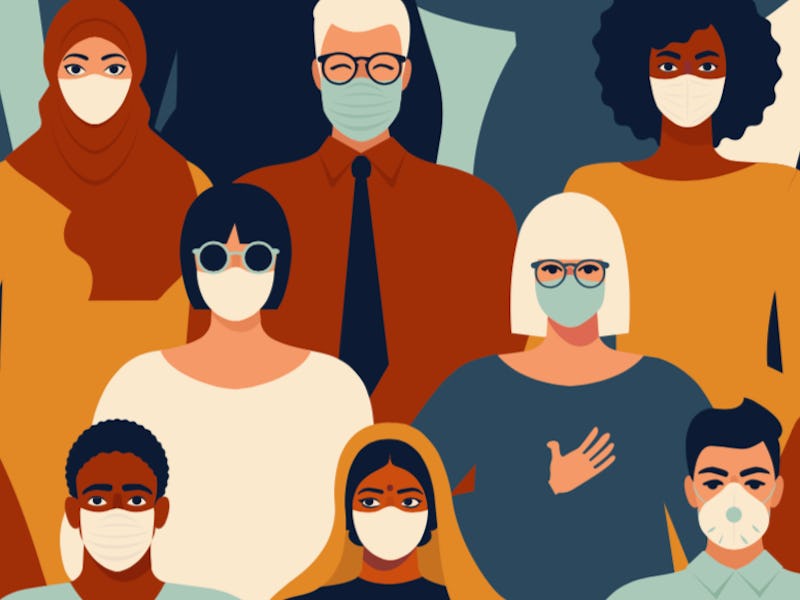Why are some Covid-19 patients asymptomatic? Scientists have 2 ideas
"We have another chance to do what we should have done at the very beginning of this pandemic."

In the United States, by some estimates, the coronavirus has already claimed 28,998 lives. But for some, the virus lingers in stealth mode. For many asymptomatic people, it doesn't even cause a tickle in their throat.
Without wide-scale testing we simply don't know how many asymptomatic cases there are, nor will we know exactly why some people don't develop symptoms.
But we know those people are out there. Speaking to NPR Robert Redfield, the director of the CDC, estimated that as many as 25 percent of people may be asymptomatic. Other estimates range from 18 to 30 percent.
While there's no clear answer yet why some people show Covid-19 symptoms and others do not, there are theories. Two of these theories are:
- Some people have a stronger innate immune response to the virus.
- Some people encounter a smaller viral load.
Warner Greene, is an immunologist and microbiologist at the University of California San Francisco, and the Director of the Gladstone Center for HIV Cure Research. He tells Inverse that the most compelling explanation is the idea that some people's innate immune systems respond incredibly well to the virus.
Scientists believe that there are many undetected Covid-19 cases, perhaps amongst people who show no symptoms.
The innate immune system is a generalized fighting force. It's comprised of very basic tools on the outside of the body, like our mucus membranes or our skin. It's also equipped with generalist tools inside of the body like natural killer cells —a type of a white blood cell that's trained to recognize viral invaders and destroy them. (And yes, they are actually called that.)
That makes it different from the adaptive immune system which is comprised of targeted antibodies that have learned to recognize SARS-CoV-2 and kill it (now we're using those antibodies as treatment).
"I think that it’s the first line of defense in the body — innate immunity," Greene says. "It’s not antibodies, it’s not T-cells. Some people have a stronger innate immune response to this virus and are able to bring it under control."
The idea is that this first line of defense might be able to detect SARS-CoV-2 right away, launch a "vigorous" response, and perhaps even kill the cell that was first infected to limit the spread, Greene says.
For now, this is a working theory.
"It’s not highly specific, but it’s an absolutely pivotal part of our defense against viruses like this," he adds.
Other theories suggest factors outside the body influence why some people don't get as sick: Like how much virus you're exposed to. Studies conducted in China suggest that people with higher "viral load" (higher amounts of virus circulating in their bodies) tend to have worse symptoms.
However, Greene doesn't favor this idea. More likely, there's some combination of factors happening inside the body that determines who gets very sick and who doesn't, he says.
We already know that underlying conditions like diabetes, obesity, asthma or other illnesses that hamper the immune system place people at higher risk. The elderly are also at-risk (and as we age, says Greene, our immune systems do tend to decline). But scientists are eagerly looking for other biomarkers that might be able to tell us more.
Greene is currently developing a study intended to search for biomarkers that might be able to predict how well someone fares against the coronavirus. Those biomarkers he says will be "very instructive."
Hidden Covid-19 cases, and a second chance at a normal life
As of writing, there are over 662,000 confirmed cases of coronavirus. But Greene explains that there's a "huge amount" of cases out there that we're not counting, partially because people either show mild symptoms or none at all.
One paper, published in Science estimates that about 86 percent of cases in Wuhan, China were not counted as the virus spread, likely facilitating the early stages of the pandemic. Many of those uncounted cases were likely asymptomatic, though, not all, the authors note.
Another pre-print paper (not peer-reviewed) based on drive-through testing in Santa Clara, California, estimates that there are actually between 50 and 85 times more cases in that region than health officials originally thought.
The only thing that can truly end our fight with coronavirus is a vaccine (on that front he is assured that "science will deliver"). However, knowing who has been exposed to this virus gives us our best shot at regaining some kind of normalcy.
If we know who is infected we may be able to put them, and their direct contacts, into quarantine right away, says Greene. That means they can't stealthily, and accidentally, spread the virus. They would stay home, just like a person who exhibits clear symptoms would stay home.
"Then society can continue to work, and the economy restarts," he says.
The more scientists learn about contact tracing, the closer we become to that potential future. But we also must scale-up testing: For life to get back to normal, everyone needs to be tested — even people who don't feel sick.
"As we come out of this shelter-in-place and everyone is separated, we have another chance to do what we should have done at the very beginning of this pandemic," Greene says.